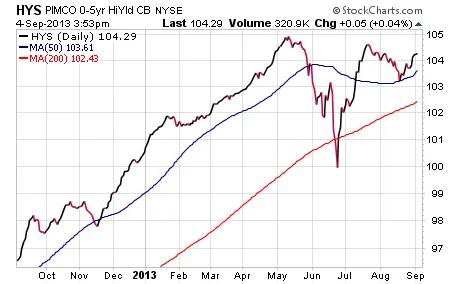I am an avid surfer and have always enjoyed being in the ocean throughout my life. When I’m riding waves I find that it completely takes me away from the stresses of the financial markets and other daily tasks. The key to successfully navigating the 10 second rush of adrenaline you get when you catch a swell is to find the sweet spot in the break. That unique place that is not too far out on the shoulder and not too far back near the white water that will carry you the farthest and give you the smoothest ride. With the ocean constantly swirling around you and currents threatening to push you off course, being in perfect trim will allow you to sail through the surf and emerge from the water unscathed.
I think that this concept can also be applied to fixed-income investing at the moment. This year has been tumultuous for investors in long-dated treasuries, emerging market, and municipal bonds. The stratospheric rise in interest rates has caught the vast majority of bond investors off guard and introduced a great deal of volatility back into what has traditionally been an asset class with minimal price fluctuations. The exodus of income investors from bond ETFs and mutual funds has been well publicized amid concerns over higher interest rates and Federal Reserve asset purchase tapering.
However, there is still one slice of the bond market that is continuing to thrive amid the turbulent seas. Short-term high yield bonds have been one of the best performing sectors in 2013 and have experienced very little price volatility. Two ETFs that hold the majority of the assets in this space are the PIMCO 0-5 Year High Yield Bond ETF (HYS) and the SPDR Barclays Short Term High Yield Bond ETF (SJNK).

Both of these funds are currently sitting very near their all-time highs and have had excellent relative performance vs. their longer dated peers. HYS has an effective duration of just 2.04 years and a current distribution yield of 4.33%, while SJNK has a slightly higher effective duration of 2.30 years and a 4.57% yield. These ETFs have both benefited from their shorter durations which insulate them from the pernicious effects of rising interest rates. In addition, their above-average yields make them attractive for income seeking investors that desire a steady monthly dividend stream from their holdings.
Another newcomer to this arena is the PowerShares Global Short Term High Yield Bond Portfolio (PGHY). This fund is unique in that it is one of the first ETFs to combine international exposure with domestic high yield holdings. Currently PGHY is weighted 44% in the United States and 56% in developed and emerging market countries. Despite the fact that this ETF was just released this month, it has already grabbed my attention because of its unique country diversification and higher yield. The fund currently has an effective duration of 1.55 years combined with a yield of 4.80%.
Now despite the low volatility and high income from these ETFs, there are still several risks lurking beneath the surface. The high yield market has blossomed over the past several years due in large part to below average default rates. However, several experts are predicting that we may see an uptick in defaults as well as spread compression if the economy hits a rough patch. This would cause the value of high yield bonds to fall and likely spur a rally into higher rated securities such as Treasuries or cash.
How to Profit From High Yield Bonds
As a trend follower I am always monitoring my investments in relation to their historical price patterns. As you can see on the HYS chart above, the upward trend in still intact and I am continuing to hold an allocation to this sector for capital appreciation and income. For clients in my income portfolio, I have selected the Osterweis Strategic Income Fund (OSTIX) as an actively managed high yield mutual fund equivalent. This fund also has modest exposure to convertible bonds as well.
If you already have an allocation to these investments or similar holdings, then I would recommend continuing to ride their success until we see a change in character. New money can be introduced on any modest pullbacks to enter new positions or reallocate existing capital. You should size your positions in line with your risk tolerance and may want to consider pairing high yield with high quality bond positions in order to offset the credit risk in your portfolio.
Going forward I will be monitoring credit spreads, interest rate changes, default rates, and volatility in the context of a risk management plan to stay on top of the changing high yield landscape. If a trend change starts to develop, I won’t hesitate to downsize or remove this sector entirely from the portfolio in order to actively shift my holdings into areas of the market that are performing in a superior capacity.
Need more yield? Download our latest strategic income special report here.